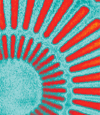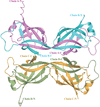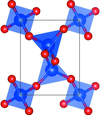issue contents
September 2021 issue

editorial
MATERIALS | COMPUTATION
This editorial gives a brief overview of operando structural science of functional materials with emphasis on catalytic science.
obituaries
PHYSICS | FELS
scientific commentaries
NEUTRON | SYNCHROTRON
A commentary is provided on a new type of prism deflection scanning X-ray microscope, providing context and some future potential applications of this new type of microscope.
BIOLOGY | MEDICINE
The mammalian-cell-entry (Mce) proteins of Mycobacterium tuberculosis enable the bacterium to acquire lipids from the host cells. Asthana et al. [IUCrJ (2021). 8, 757–774] present the first structural insights into the potential assembly of Mce1 and Mce4, advancing our understanding of lipid transport by the human pathogen that causes tuberculosis.
research letters
NEUTRON | SYNCHROTRON
A scheme for high-resolution X-ray microscopy by scanning the nanoprobe, rather than the sample, has been demonstrated. A combination of X-ray prisms and advanced reflective mirror optics offer a simple and precise nanoprobe scan that will open new opportunities for microscopic X-ray analyses.
research papers
NEUTRON | SYNCHROTRON
A deep learning neural network has been developed to efficiently and accurately clean the background noise in experimental lab-based X-ray diffraction images. A better spot segmentation is obtained and thus grain mapping in 3D is improved compared with the conventional method.
BIOLOGY | MEDICINE
Small-angle X-ray scattering and tryptophan fluorescence studies of phosphoethanolamine transferase (EptA) suggest conformational flexibility linked to enzyme activity.
MATERIALS | COMPUTATION
X-ray diffraction tensor tomography is used to map clay mineral orientation and high-density inclusions in a sample of Pierre shale.
BIOLOGY | MEDICINE
The mammalian cell entry genes (mceA–mceF) encode the substrate-binding proteins of the lipid-transporting Mce complexes in mycobacteria. The MCE domain of Mce4A has been crystallized as a domain-swapped dimer with the signature β-barrel fold. Solution studies show that the domains of Mce1A and Mce4A are predominantly monomeric and suggest that the helical domain is involved in lipid interactions.
PHYSICS | FELS
The dynamics of small nanoparticles dispersed in water are probed with multi-speckle XPCS taking advantage of the pulse structure of the European XFEL. The time resolution is sufficient to correctly probe the many-body hydrodynamic interactions in samples both at equilibrium and driven by the XFEL pulses. Practical examples demonstrate how X-ray pulse-induced dynamics can be controlled.
BIOLOGY | MEDICINE
Improvements in cryo-trapping technology enable single-crystal time-resolved crystallography of an enzyme with 40 ms time resolution.
MATERIALS | COMPUTATION
A new geometrical approach is proposed for finding the most prominent planar gaps/cleavage planes in crystal structures. The approach is realized by using the GALOCS program package and is demonstrated on several inorganic structures.
MATERIALS | COMPUTATION
The UnitCell Tools package was developed to determine unit-cell parameters of a crystal from a single electron diffraction pattern with high-order Laue zone reflections acquired in the conventional transmission electron microscope.
CHEMISTRY | CRYSTENG
A method of regulating the crystallization of conformational polymorphs based on the crystal structure similarity of templates and the target crystal form has been developed.
BIOLOGY | MEDICINE
Three crystal structures of the transcription regulator HigA2 from Mycobacterium tuberculosis reveal a flexible dimerization mode, which affects its interaction with DNA.
CHEMISTRY | CRYSTENG
Download citation


Download citation


A combination of powder and single-crystal polarized neutron diffraction, very low temperature synchrotron X-ray diffraction and ab initio calculations can be used to quantify and explain the magnetic anisotropy in Co(II) single-molecule magnets.
BIOLOGY | MEDICINE
The crystal structure of the MarR protein from Paenisporosarcina sp. TG-14 is reported at 1.6 Å resolution.
PDB reference: PaMarR, 7dvn



 journal menu
journal menu




 access
access






























